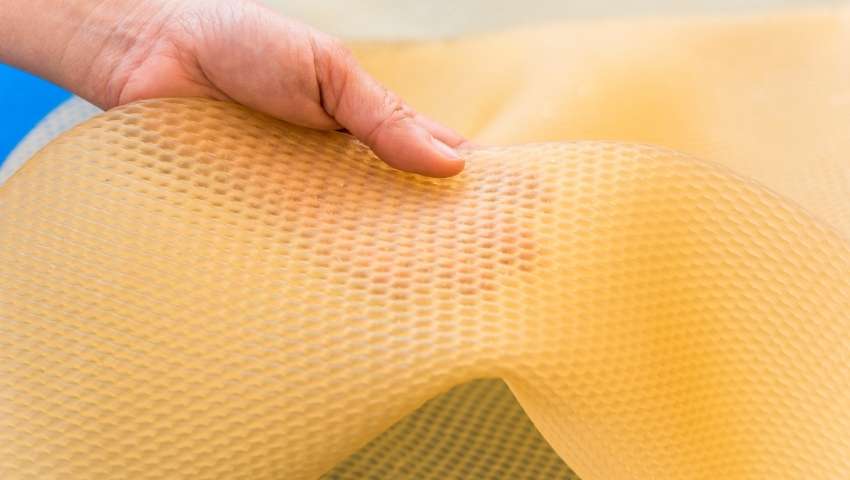Are you considering installing rubber surfacing in your home or outdoors?
Then, you will be interested to know the types of rubber used in rubber surfacing. It will help you to choose the best rubber type that suits your requirements.
There are many different types of rubber that are used in rubber surfacing. However, rubber can be classified into two main types – natural rubber that is, as the name suggests, procured naturally, and synthetic rubber that is made with petroleum.
Let’s compare the two rubber types to find out which rubber will best suit your requirements.
Natural rubber
Natural rubber is made out of the latex sap derived from the rubber tree. It consists of long isoprene polymer chains that are connected loosely. Rubber is elastic in nature and has tensile strength. It is also resistant to wear and heat.
Pros:
- Flexible and Elastic – Natural rubber is used in rubber surfacing mostly owing to its flexibility, elasticity, tensile strength, and wear and heat resistance.
- Anti-bacterial properties – Natural rubber is also anti-bacterial and anti-dust mite. So, it is a hygienic solution for homeowners looking to install rubber floors.
- Eco-friendly – Natural rubber is biodegradable, sustainable, and eco-friendly. Natural rubber flooring is also suitable for both indoors and outdoors.
- Added safety – It provides added safety as it is anti-slip and absorbs impact. Plus, it is noise-absorbent as well.
- Great for gyms – Due to the high coefficient of friction in the material, rubber flooring is a great option for workstations, home gyms, or any place where you have to stand for a long period of time while being efficient.
- Affordable – Natural rubber is affordable, easy to maintain and install.
Cons:
- The natural rubber has natural impurities and is susceptible to environmental conditions, oil, fuel, and non-polar solvents.
- It is less resistant to heat, light, and ozone, unlike synthetic rubber.
- Latex can induce allergic reactions.
Synthetic rubber
Synthetic rubber is a man-made rubber. It is made using petroleum and other minerals. This rubber type is more durable than natural rubber and gives many of the same benefits that natural rubber provides.
The most popular synthetic rubber surfaces include EPDM rubber, recycled rubber, neoprene rubber, nitrile rubber, and butyl rubber.
Pros:
- More durable – Synthetic rubber is more durable and resilient than natural rubber. High-quality synthetic rubber floors can withstand extreme weather conditions and can last for up to 20 years if you maintain them properly.
- Higher shock-absorbing impact – It has a high shock-absorbing impact and is anti-slip, and thus offers added safety during accidents or falls. It also absorbs noise – which is a great option if you are designing an inclusive home or inclusive play area for kids.
- Serves as a cushion – Synthetic rubber floor serves as a cushion under your feet and will keep your room warm during the winter.
- Moisture Resistant – Since synthetic rubber is moisture-resistant, water or fluid spills will not damage it.
- Pathogen Resistant – It doesn’t breed pathogens like bacteria and fungi. Thus, it is a hygienic flooring option for those looking for one.
- Wide variety to choose from – There are plenty of synthetic rubber floor designs and colors to choose from. Naturally, it will improve the aesthetic appeal of your home.
- Cost-effective – Synthetic rubber flooring is cost-effective and is more readily available.
Cons:
- When new, synthetic rubber floor emits an odor. Though harmless, it can be very unpleasant as well.
- To install a synthetic rubber floor, you will need the help of a professional. Don’t go DIY unless you are an expert yourself.
- You need to install a subfloor prior to rubber floor installation.
- It is not nearly as biodegradable as natural rubber.
Natural rubber vs. Synthetic rubber: Which one is better?
It all boils down to its application. Synthetic rubber is a better choice if you are going to use it in high-traffic areas or outdoors as it has a higher temperature, aging, and abrasion resistance. It is also cheaper to produce.
Conversely, natural rubber is sturdy, flexible, and heat-resistant. It is also a bio-degradable, sustainable, and eco-friendly option.
However, note that synthetic rubber manufacturers also make recycled rubber floors out of items like automobile tires that otherwise could have ended up in the landfill.
You can choose the rubber type depending on where you are going to use it.

